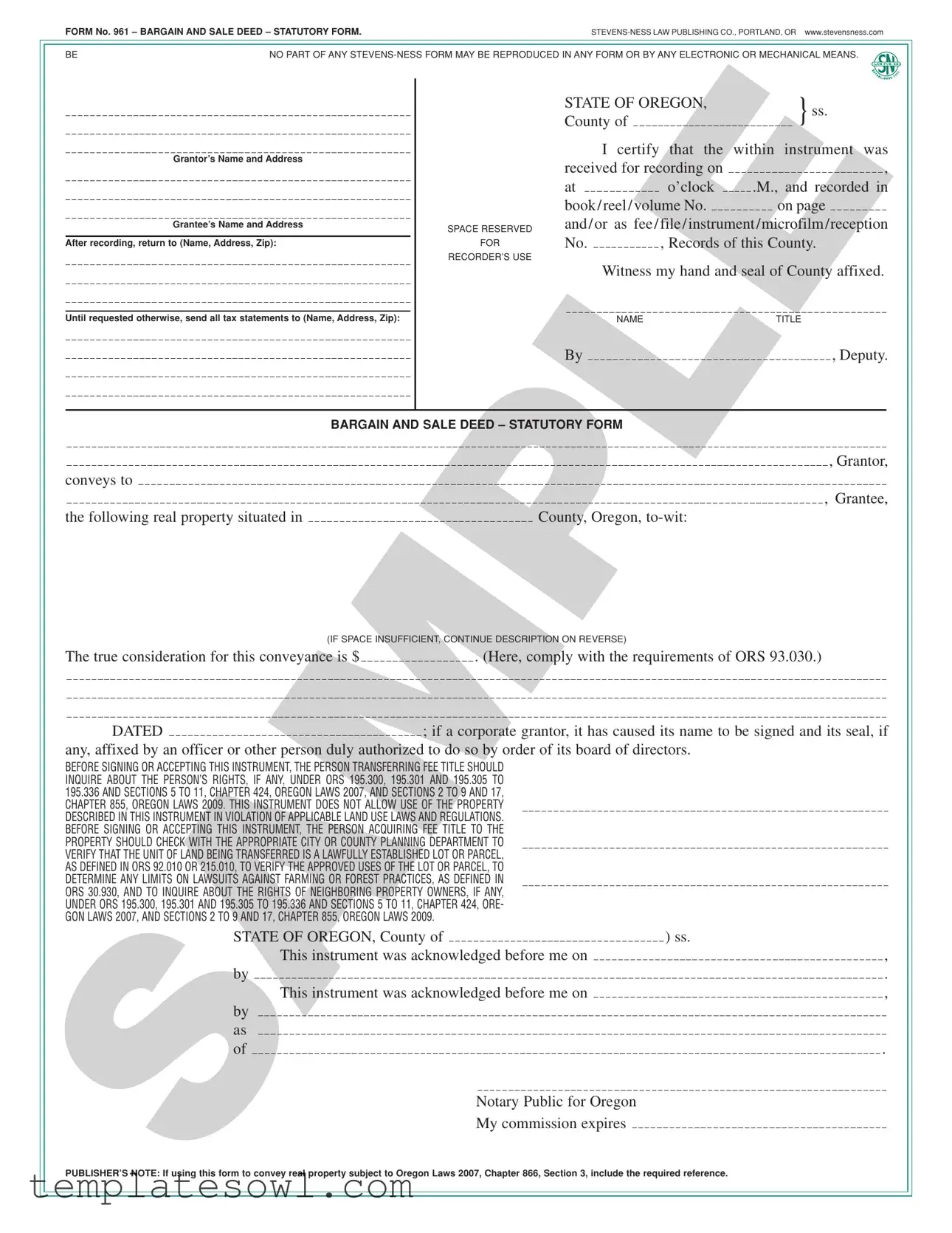What is Form 961?
Form 961, also known as the Bargain and Sale Deed, is a legal document used in Oregon to transfer ownership of real property. It is a statutory form that provides essential details about the transaction, including the names of the seller (grantor) and buyer (grantee), the property being transferred, and any financial considerations involved.
Who should use Form 961?
This form is suitable for anyone looking to sell or buy real estate in Oregon. However, it is particularly important for individuals or entities that want to ensure their property transfer follows state laws and maintains clear title to the property. Always consider consulting with a legal professional to confirm it meets your needs.
What information is required on Form 961?
The form requires several key pieces of information. You'll need to provide the names and addresses of both the grantor and grantee, a detailed description of the real property being transferred, and the sale price or consideration. Additionally, any corporate grantor will need to indicate which authorized person completed the signing.
Why is a legal description of the property important?
A legal description provides specific boundaries and characteristics of the property in question. It is crucial for identifying the exact property involved in the transaction. Using an inaccurate description can lead to disputes or complications in ownership down the line.
What does it mean when it states the "true consideration for this conveyance is $ .”?
This line refers to the actual financial amount exchanged for the property. It’s essential to fill it out accurately, as it can affect tax assessments and may have implications for future property valuations.
What are the legal implications of Form 961?
Signing this form signifies that the grantor is transferring their rights to the property to the grantee. It’s important to understand that this deed does not allow the property to be used in violation of any local laws or regulations, ensuring compliance with land use requirements.
Should the grantee check with city or county planning departments?
Yes, the grantee is strongly advised to verify that the property is a lawful lot or parcel. This ensures compliance with local zoning laws and prevents future legal issues regarding land use or the rights of neighboring property owners.
What happens after Form 961 is signed?
Once Form 961 is signed and acknowledged by a notary public, it should be recorded with the local county recorder’s office. Recording the deed is essential to protect the new owner's rights and establish a public record of the property transfer.
Can the content of Form 961 be altered?
It is generally discouraged to alter the content of any statutory form like Form 961 without proper legal advice. Making unauthorized changes can lead to the form being deemed invalid or unenforceable. Always consult legal counsel before making adjustments.
Where can I find more information about Form 961?
For more details, you can visit state or local government websites that provide legal forms and resources. You may also consult a real estate attorney or a professional specializing in property transactions for guidance tailored to your situation.

